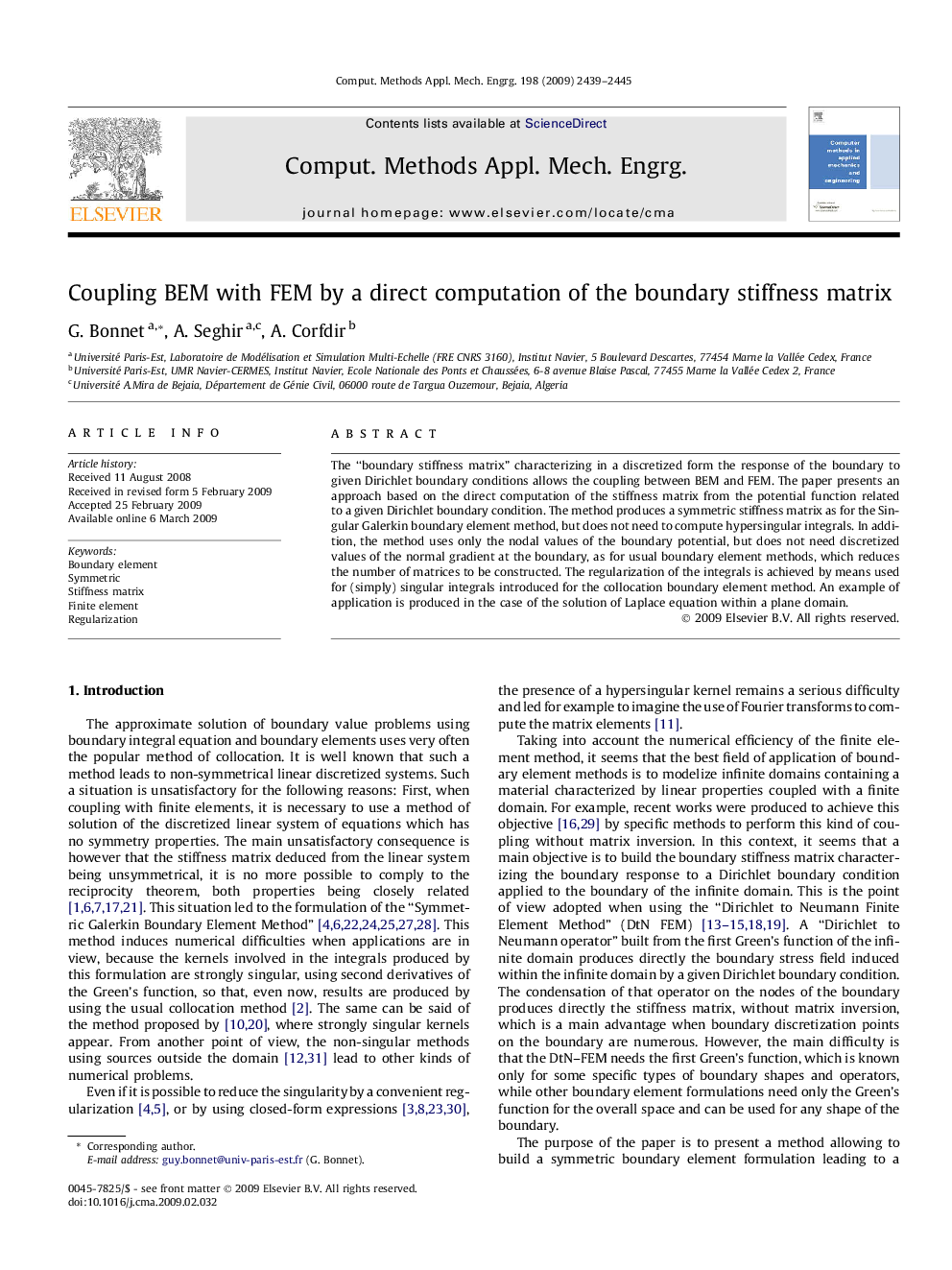| Article ID | Journal | Published Year | Pages | File Type |
|---|---|---|---|---|
| 499230 | Computer Methods in Applied Mechanics and Engineering | 2009 | 7 Pages |
The “boundary stiffness matrix” characterizing in a discretized form the response of the boundary to given Dirichlet boundary conditions allows the coupling between BEM and FEM. The paper presents an approach based on the direct computation of the stiffness matrix from the potential function related to a given Dirichlet boundary condition. The method produces a symmetric stiffness matrix as for the Singular Galerkin boundary element method, but does not need to compute hypersingular integrals. In addition, the method uses only the nodal values of the boundary potential, but does not need discretized values of the normal gradient at the boundary, as for usual boundary element methods, which reduces the number of matrices to be constructed. The regularization of the integrals is achieved by means used for (simply) singular integrals introduced for the collocation boundary element method. An example of application is produced in the case of the solution of Laplace equation within a plane domain.
